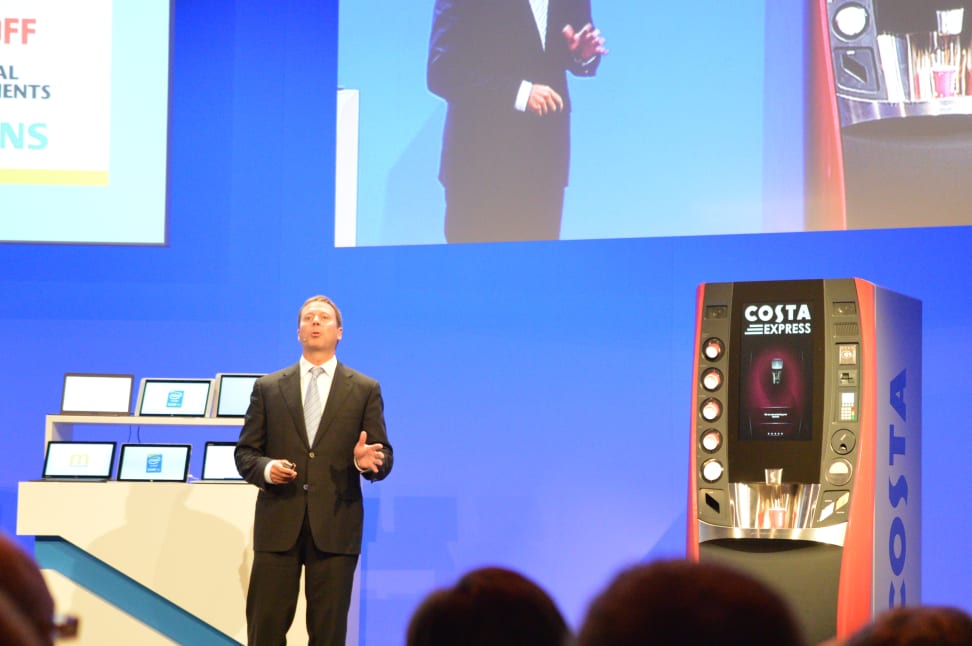Intel's New M Processor Aims to Corner the Mobile Market
Today's keynote is brought to you by the letter M.
 Credit:
Credit:
Recommendations are independently chosen by Reviewed's editors. Purchases made through the links below may earn us and our publishing partners a commission.
Intel is doubling down on the 2-in-1 computer.
Today, at the company's IFA International Keynote, Executive Vice President Kirk Skaugen unveiled the company's new Core M processor. It's the world's first 14nm processor, and will allow for the design of fanless laptops and tablets using Intel silicon.
"You can get the best of both worlds in one device," said Skaugen. "But we think there's been something missing."
With the new Core M Processor, Intel is trying to further blur the lines between laptops, tablets, and 2-in-1 devices. The company showed off eight new hybrid machines from vendors like Acer and Asus, all with super-thin designs.
(Now we know why Acer didn't reveal the specs of its new Switch 12.)
Intel also made a point of noting that the new processor line is completely conflict-free. In other words, the company has avoided sourcing rare-earth metals from mines controlled by military groups, which often utilize forced labor. And Intel says it's using RFID tracking to ensure it stays that way.
Surprisingly, Intel didn't spend much time talking about business or enterprise applications. Instead, it seemed as if the company was scrambling to inject itself back into the consumer consciousness.
The keynote started with an upbeat video filled with personal, fun, human moments—all interspersed with shots of Intel-powered devices, of course. Significant time was even devoted to giant tablet computers that can be used to play board games.

Intel even had a DJ spinning techno before the start of its keynote.
The only true mention of business was a software bundle for small businesses that Intel would be including on select Android and Windows devices.
As for other announcements, the company demoed a few new technologies from its initiatives. One of its initiatives comes from the former Wireless Gigabit Alliance, which created an alternative to WiFi called WiGig. It allows devices to transfer data and connect to external devices like monitors at incredibly high transfer speeds.
While it's still in alpha, Intel showed off WiGig on a laptop connected to two external monitors without using any wires.
The company also demoed wireless charging using a technology called magnetic resonance. With this tech, devices could recharge on a desk with a built-in charger, without it heating up. To finish off the keynote, Intel demoed its RealSense 3D technology, which easily allows you to 3D model real-world objects, including people. To prove it, a 3D computer model of Kirk Skaugen was created on the spot.
With all of these initiatives, Intel seems to be trying to reclaim its former glory—calling back to the days before ARM, Qualcomm, MediaTek, and Nvidia swooped in to corner the emerging mobile market. Skaugen summed it up perfectly in his closing remarks.
"If a device computes and connects, we want it done best on Intel," he said.

